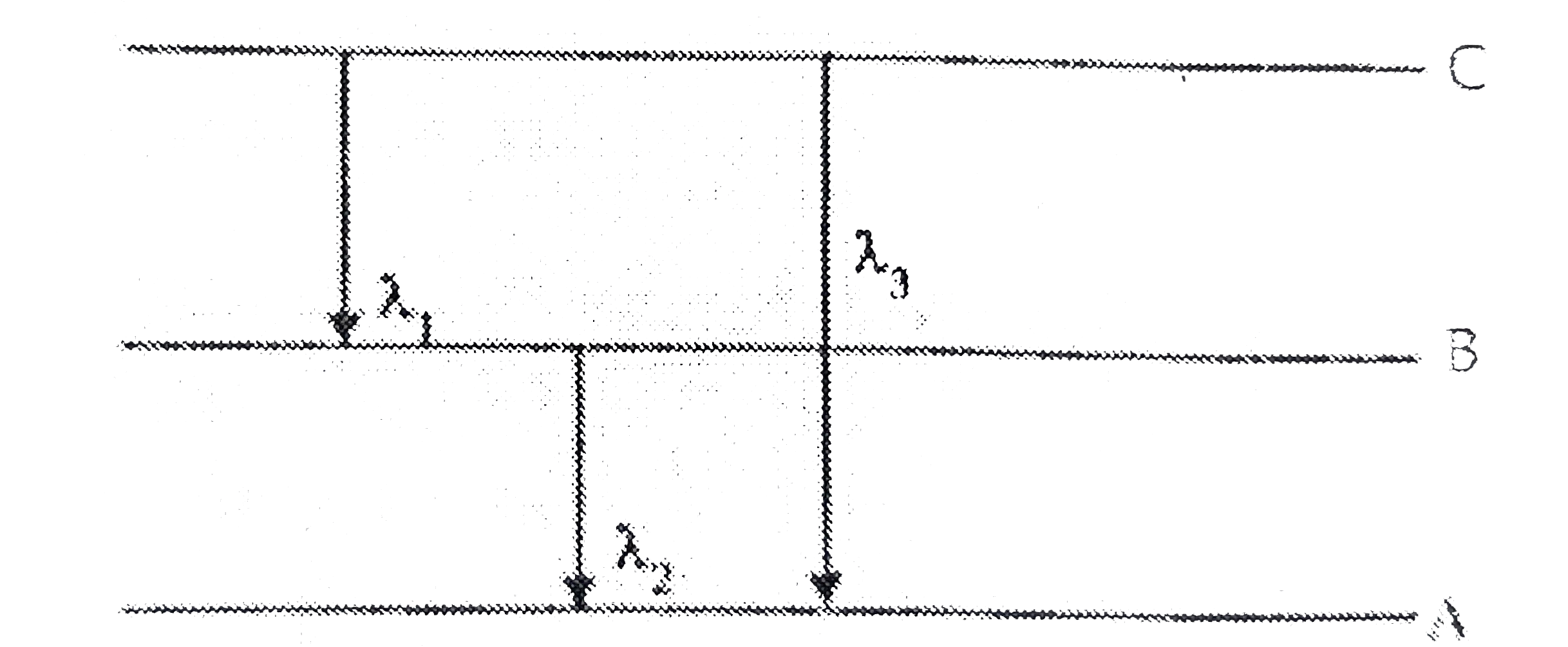(i) State Bohr's quantization condition for defining stationary orbits . How does de- Broglie hypothesis explain the stationary orbits ?
(ii) find the relation beween the three wavelengths
λ1,λ2 and λ3 from the energy level diagram shown :

Step by step video & image solution for (i) State Bohr's quantization condition for defining stationary orbits . How does de- Broglie hypothesis explain the stationary orbits ? (ii) find the relation beween the three wavelengths lambda_(1), lambda _(2) " and " lambda_(3) from the energy level diagram shown : by Physics experts to help you in doubts & scoring excellent marks in Class 12 exams.
Updated on:21/07/2023Similar Questions
de-Broglie wavelength of an electron in the nth Bohr orbit is λn and the angular momentum is Jn then
View SolutionA particle moving with kinetic energy E1 has de Broglie wavelength λ1. Another particle of same mass having kinetic energy E2 has de Broglie wavelength λ2.λ2=3λ2. Then E2−E1 is equal to
View Solution
Knowledge Check
A particle moves in a closed orbit around the origin, due to a force which is directed towards the origin. The de-broglie wavelength of the particles varies cyclically between two values λ1,λ2withλ1>λ2. Which of the following statements are true?
AThe particle could be moving in a circular orbit with origin as centre.BThe particle could be moving in an elliptical orbit with origin as its focus.CWhen the de Broglie wavelength is λ1, the particle is nearer the origin than when its value is λ2.DBoth (a) and (c )
A particle moving with kinetic energy E1 has de Broglie wavelength λ1. Another particle of same mass having kinetic energy E2 has de Broglie wavelength λ2.λ2=3λ2. Then E2−E1 is equal to
View SolutionA particle moves in a closed orbit around the origin, due to a force which is directed towards the origin. The de-broglie wavelength of the particles varies cyclically between two values λ1,λ2withλ1>λ2. Which of the following statements are true?
View SolutionAn electron is moving in Bohr's fourth orbit. Its de Broglie wavelength is λ. What is the circumference of the fourth orbit?
View SolutionConsider an electron in the nth orbit of a hydrogen atom in the Bohr model. The circumference of the orbit can be expressed in terms of the de Broglie wavelength λ of that electron as
View SolutionTwo protons are having same kinetic energy. One proton enters a uniform magnetic field at right angles ot it. Second proton enters a uniform electric field in the direction of field. After some time their de Broglie wavelengths are λ1andλ2 then (a) λ1=λ2 (b) λ1<λ2 (c) λ1>λ2 (d) some more information is required
View SolutionThe de-Broglie wavelength (λB) associated with the electron orbiting in the second excited state of hydrogen atom is related to that in the ground state (λG) by :
View SolutionIf an electron in a hydrogen atom is in its 2nd excited state, orbiting the nucleus in a stationary orbit or radius 4.65Å, then its de - Broglie wavelength is
View Solution
